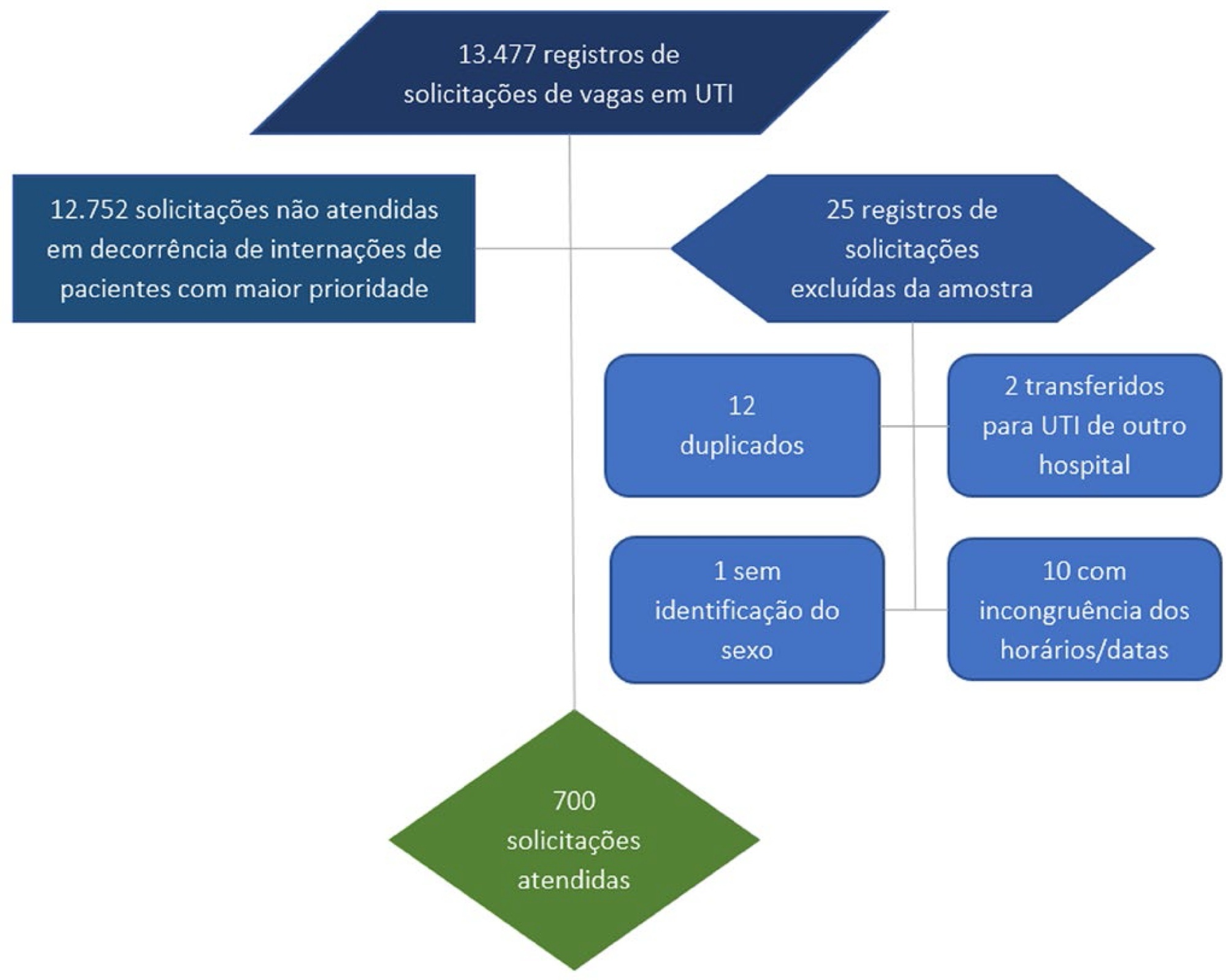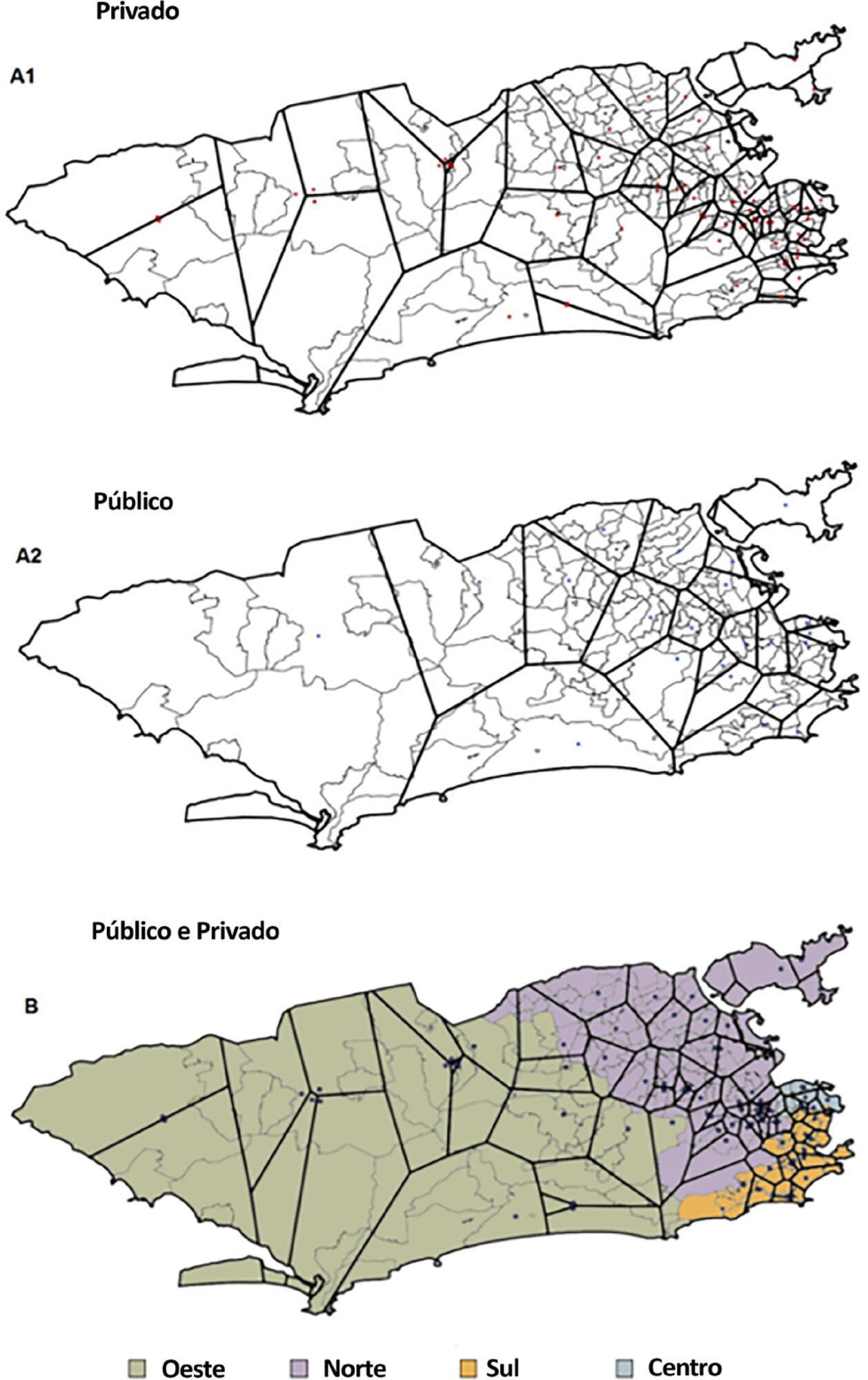Abstract
Rev Bras Ter Intensiva. 2020;32(3):412-417
DOI 10.5935/0103-507X.20200070
To evaluate the vacancy and occupancy times of intensive care unit beds; to analyze differences in these times between the day and night shifts and weekdays, weekends, and holidays; and to identify predictors of vacancy and occupancy times.
This was a cross-sectional, observational, descriptive, analytical, inferential study. A total of 700 vacancy-to-occupancy records from 54 beds of an adult intensive care unit of a public hospital in Sergipe, Brazil, dated between January and December 2018 were analyzed. The nonparametric Mann-Whitney test was used for comparisons between groups. Several predictive models of length of stay were constructed. The incidence rate ratio was used to estimate the effect size.
During the study period, there were 13,477 requests for the 54 intensive care unit beds, and only 5% (700 patients) were granted. The vacancy-to-occupancy times were shorter when beds were occupied at night (incidence rate ratio of 0.658; 95%CI 0.550 - 0.787; p < 0.0001) or on weekends (incidence rate ratio of 0.566; 95%CI 0.382 - 0.838; p = 0.004). Female sex (incidence rate ratio of 0.749; 95%CI 0.657 - 0.856; p < 0.0001) was a predictor of shorter vacancy-to-occupancy time. This time tended to increase with patient age (incidence rate ratio of 1.006; 95% CI 1.003 - 1.009; p < 0.0001).
Disparities in the waiting time for intensive care unit beds were identified, as the time was greater in the daytime and on weekdays, and women and younger patients experienced shorter vacancy-to-occupancy times.

Abstract
Rev Bras Ter Intensiva. 2020;32(1):72-80
DOI 10.5935/0103-507X.20200012
To analyze the distribution of adult intensive care units according to geographic region and health sector in Rio de Janeiro and to investigate severe acute respiratory infection mortality in the public sector and its association with critical care capacity in the public sector.
We evaluated the variation in intensive care availability and severe acute respiratory infection mortality in the public sector across different areas of the city in 2014. We utilized databases from the National Registry of Health Establishments, the Brazilian Institute of Geography and Statistics, the National Mortality Information System and the Hospital Admission Information System.
There is a wide range of intensive care unit beds per capita (from 4.0 intensive care unit beds per 100,000 people in public hospitals in the West Zone to 133.6 intensive care unit beds per 100,000 people in private hospitals in the Center Zone) in the city of Rio de Janeiro. The private sector accounts for almost 75% of the intensive care unit bed supply. The more developed areas of the city concentrate most of the intensive care unit services. Map-based spatial analysis shows a lack of intensive care unit beds in vast territorial extensions in the less developed regions of the city. There is an inverse correlation (r = -0.829; 95%CI -0.946 to -0.675) between public intensive care unit beds per capita in different health planning areas of the city and severe acute respiratory infection mortality in public hospitals.
Our results show a disproportionate intensive care unit bed provision across the city of Rio de Janeiro and the need for a rational distribution of intensive care.

Search
Search in:
Case reports (56) Child (53) Coronavirus infections (34) COVID-19 (46) Critical care (115) Critical illness (54) Extracorporeal membrane oxygenation (26) Infant, newborn (27) Intensive care (72) Intensive care units (256) Intensive care units, pediatric (31) mechanical ventilation (38) Mortality (76) Physical therapy modalities (28) Prognosis (61) Respiration, artificial (119) Respiratory insufficiency (26) risk factors (34) SARS-CoV-2 (28) Sepsis (98)